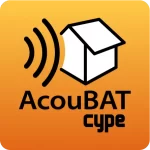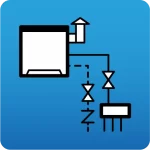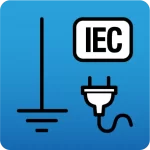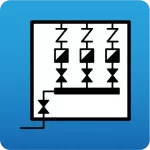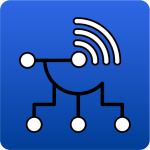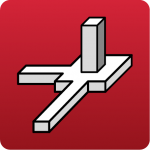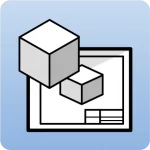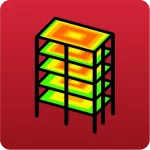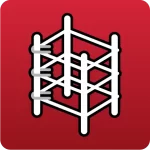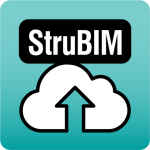Please refer to the following list of CYPE file extensions if you wish to check the program associated with a specific extension.
CYPE programs use files with different extensions:
- The main file of each program has a specific extension that can be consulted next to the “File name” in the process of creating a new work (“File”-“New”) or in the process of saving it under any name (“File”-“Save as”). Each CYPE program uses a different file extension.
By default, you can find this file in the following path C:\CYPE Ingenieros\Projects\program_name, but you can change the path at any time via “File”-“Save as”. - In some cases, the file is accompanied by auxiliary information files and folders with several extensions which are located in the same path as the main file. To transfer the information to another directory or from one computer to another, all content beginning with the same name should be copied to the path, both files and folders, not just the main file.
- In the work process, a backup file is generated in the same path as the main file. These files have an extension similar to the extension of the main file, with the last character replaced by a dollar sign ($).
This backup can be recovered at any time. To do this, modify its extension by deleting the dollar sign and typing in the corresponding character to obtain a file with the extension of the main file. This recovered file can be opened with the program just like any other file. - In the working process, data files with different extensions are generated in the Job_name.EXT_dat folder, where EXT is the extension of the main file.
By default, the aforementioned files and folder can be found in the same path as the main file. - In the process of linking, importing and exporting to BIMserver.center, communication files are generated via BIMserver.center which are located in the folder C:\bim_projects\user\project (as of version 2024.a, in C:\Users\user\AppData\Roaming\CYPE Ingenieros\BIMserver.center\bim_projects\user\project) with different extensions (.ifc, .gltf, .pdf and others).
These are not the native files used by the program, but they allow communication with other programs linked to BIMserver.center. - In some cases, the program saves user configuration files in the C:\Users\Windows_user_name\AppData\Roaming\CYPE Ingenieros\v20XX folder, where v20XX is the program version.
This is the case for libraries of materials or elements. The extension of these files is highly variable and can be checked in the process of importing or exporting these elements within the program. - When opening a job saved with a previous version, the program offers the possibility to save a compressed backup file. This file will be saved in C:\CYPE Ingenieros\Backup or in C:\CYPE Ingenieros\program_name\Backup and have the CYP extension.
You can recover this compressed backup file by opening the corresponding program and using the “Unzip” option available in the “File” or “File”-“File Management” menu. - Finally, there are various folders of results files with different extensions in C:\CYPE Ingenieros, such as C:\CYPE Ingenieros\Export files, C:\CYPE Ingenieros\Reports and C:\CYPE Ingenieros\DWG drawings that can be used to store the information obtained with the program via the printing and exporting processes.
Example
CYPE Architecture saves the information in a file with a .str extension:

Additionally, CYPE Architecture generates a backup file with the .st$ extension and a .str_dat data folder.
They are all located in the C:\CYPE Ingenieros\Projects\CYPE Architecture folder.
When exporting, communication files are generated via BIMserver.center (including an .ifc file and a .gltf file) in the C:\bim_projects\user\project\Architecture folder.

